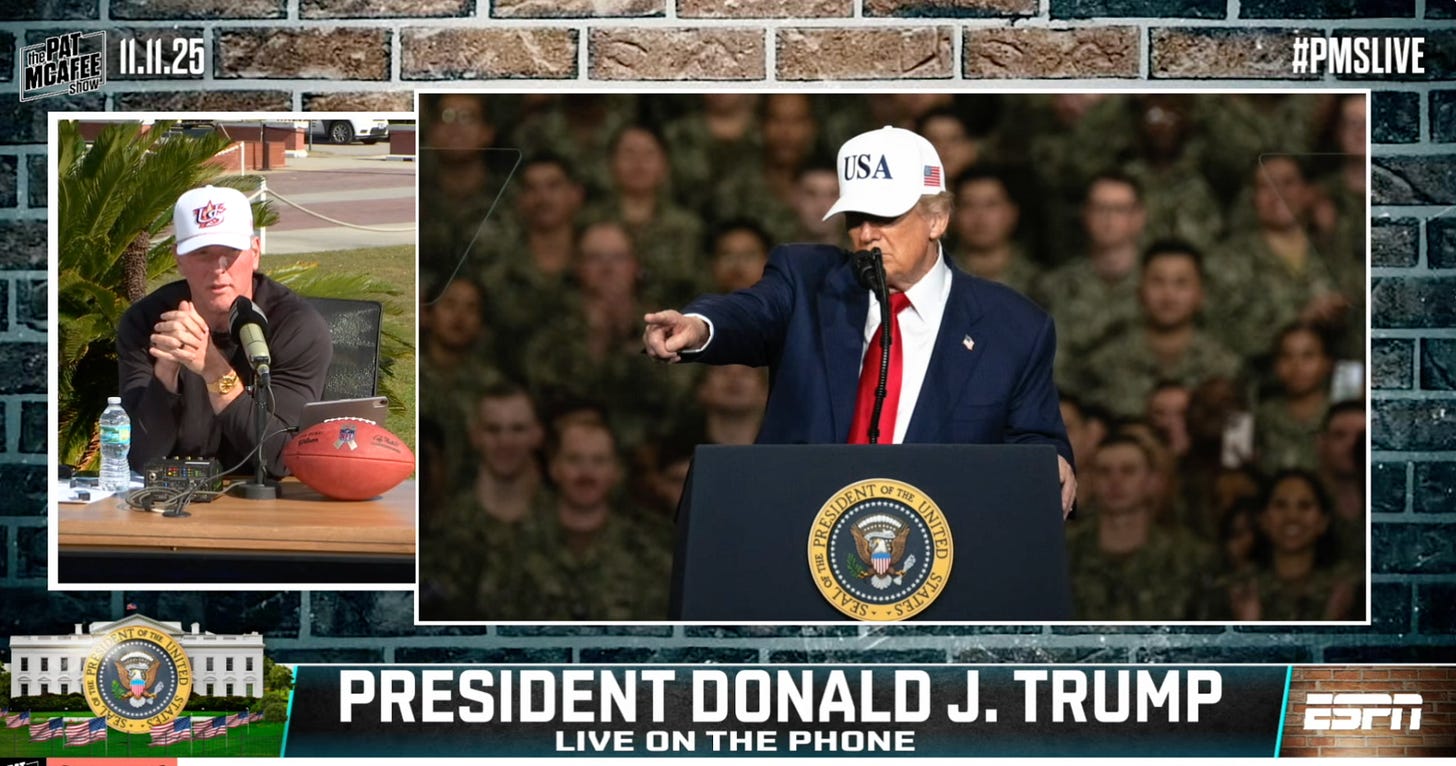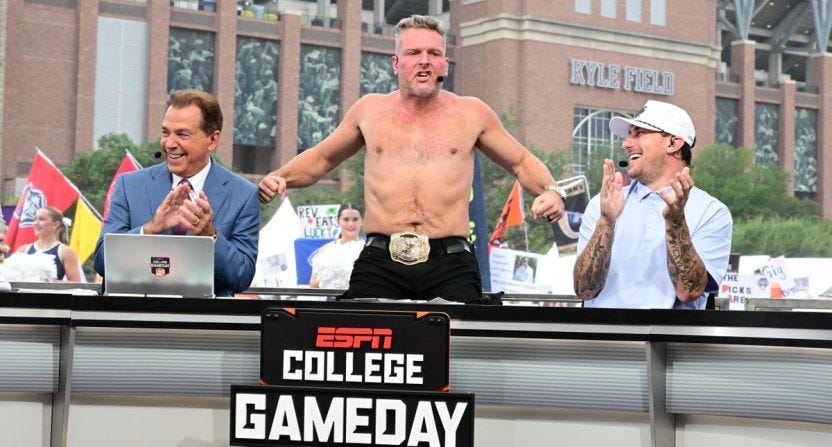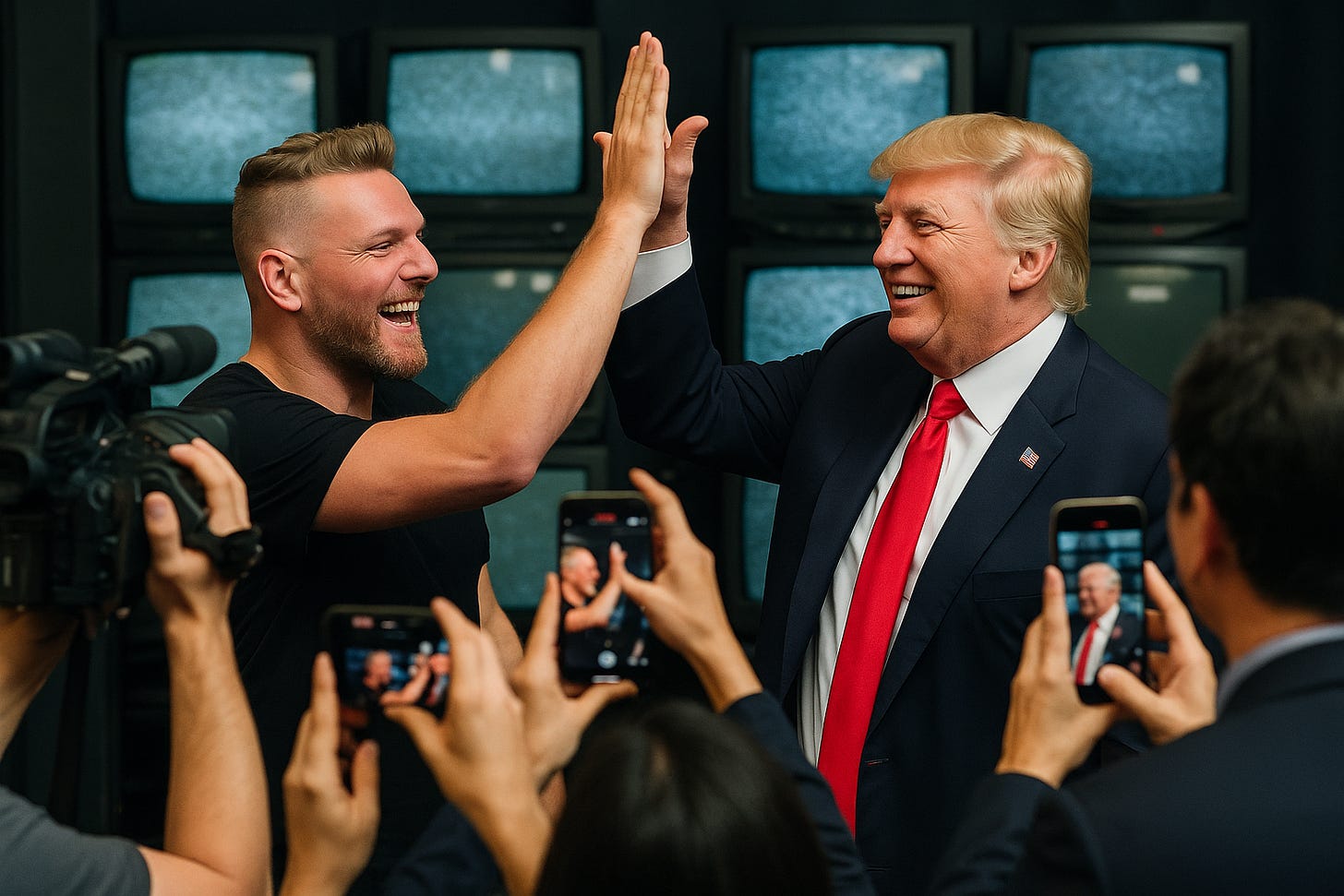The Day “Stick to Sports” Died
ESPN didn’t break it. The algorithm did.
I’m watching Donald Trump call into The Pat McAfee Show and lie to millions of people… on ESPN.
The president claimed Biden “evaporated” benefits for veterans.
He said the shutdown was caused by people who “hate our country.”
McAfee laughs, nods… says Trump is “hilarious.” He also added:
“I’m not an expert in politics. That’s not what we do here. We talk ball. We talk life. We talk to whoever wants to talk to us.”
Eight years ago, Jemele Hill got suspended by ESPN for calling out Trump.
Now Trump is phoning in an interview on the network, talking politics on ESPN in real time.
Not a scandal. Not even awkward. Just another “maximum reach” moment.
The era of “stick to sports” was never really about fairness.
It was about control—protecting the brand at all costs, keeping the wrong views off air, the ones that might piss off a sportsbook or trigger a boycott. For years, that helped ESPN keep its hands clean.
Then the attention economy rewired everything.
Pat McAfee isn’t your ordinary host. He’s an algorithm in human form: loud, unpredictable, impossible to ignore.
ESPN didn’t reject McAfee… it needed him. $85M to buy YouTube relevance and plug a leaking business model with a younger audience.
Trump calling in wasn’t surprising. It was inevitable.
Last year, Disney (ESPN’s parent company) settled a defamation suit with Trump for $16M. They issued a public apology. Many legal experts said they could have won in court.
Disney made the calculation that it was better to pay than risk the headlines that would come out in discovery. And, more importantly… Trump’s wrath.
It’s a simple playbook: protect the brand, chase impressions, get younger, keep the feed moving.
Over the last decade, the algorithms have rewritten the incentives. Outrage equals engagement.
Jemele Hill got punished for having a point of view. Pat McAfee gets rewarded for not having one.
I saw this shift happen from inside digital media. Around 2016, the metrics changed… from “did people read this?” to “did they share this?”
Then “did they comment?”... “did they watch the whole clip?”
The algorithms reward conflict. The most viral stories are usually the ones that make people the most angry.
The most successful media figures are the ones who can generate emotion on demand.
Meta, TikTok, YouTube and X rewired the attention ecosystem.
Engagement is oxygen. Everything else is noise.
Sports is still one of the few places that can bring people together. But now even that’s at risk.
Trump and McAfee know the game better than most.
They instinctively understand how the feed works: feed it, keep it moving, never break character.
It’s not about what’s true anymore. It’s about what travels.
And now ESPN is part of the dance.




